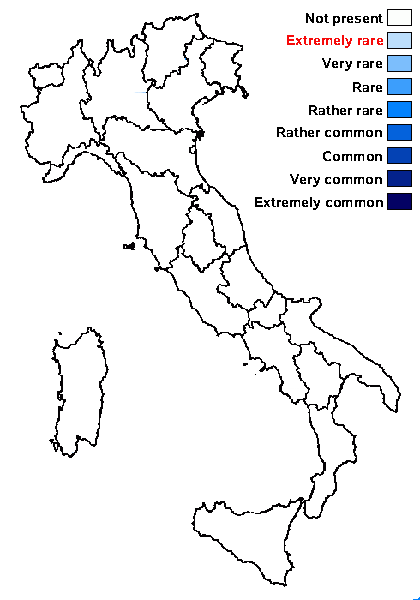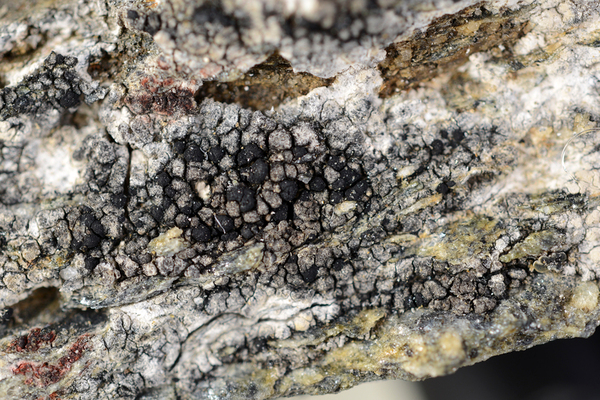Rhizocarpon vorax Poelt & Hafellner
Herzogia, 6, 1-2: 311, 1983.
Synonyms:
Distribution:
Description: Thallus crustose, brownish but often appearing grey-white, immersed in the thalli of Pertusaria-species and forming up to 1 cm wide, orbicular, sometimes confluent patches on the thalli of the host. Medullary hyphae I-. Apothecia lecideine, black, mostly developing in cracks amongst the areoles of the host, rounded, 0.2-0.6 mm across, with a flat to slightly convex disc, without an evident proper margin. Proper exciple thin, of radially arranged hyphae, dark purple-brown, K+ purple: epithecium dark purple-brown, granulose, K+ dark olive; hymenium colourless, 120-150 μm high, I+ blue; paraphysoids strongly anastomosing, 3-4 μm thick, the apical cells only slightly swollen, pigmented; hypothecium dark brown, 50-200 μm high. Asci 8-spored, clavate, fissitunicate, with a well-developed tholus, lacking an ocular chamber, Rhizocarpon-type. Ascospores muriform, with 3-5 transverse septa and 1-2 incomplete longitudinal septa (10-15 cells visible in optical view), soon pigmented, ellipsoid, 28-33 x 15-31 μm, halonate when young. Photobiont chlorococcoid. Spot tests: thallus K-, C-, KC-, P-. chemistry: thallus without lichen substances. Note: a rare boreal-montane to nemoral-alpine species found on weakly calciferous schists or basic siliceous rocks, obligately parasitic on Pertusaria-species, with a few records from the Eastern Alps only (Austria); to be looked for in the Italian Alps.
Growth form: Crustose
Substrata: rocks
Photobiont: green algae other than Trentepohlia
Reproductive strategy: mainly sexual
paras Pertusaria-species

Predictive model
Growth form: Crustose
Substrata: rocks
Photobiont: green algae other than Trentepohlia
Reproductive strategy: mainly sexual
paras Pertusaria-species

Predictive model
 Index Fungorum
Index Fungorum
 GBIF
GBIF


